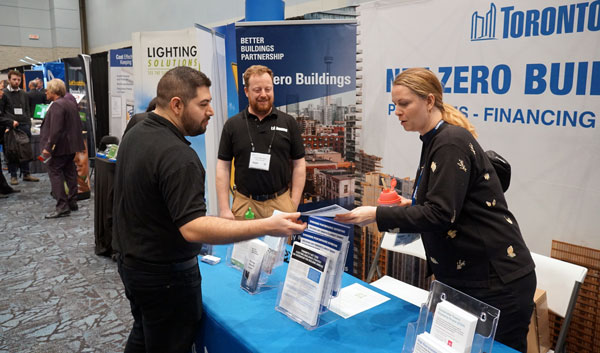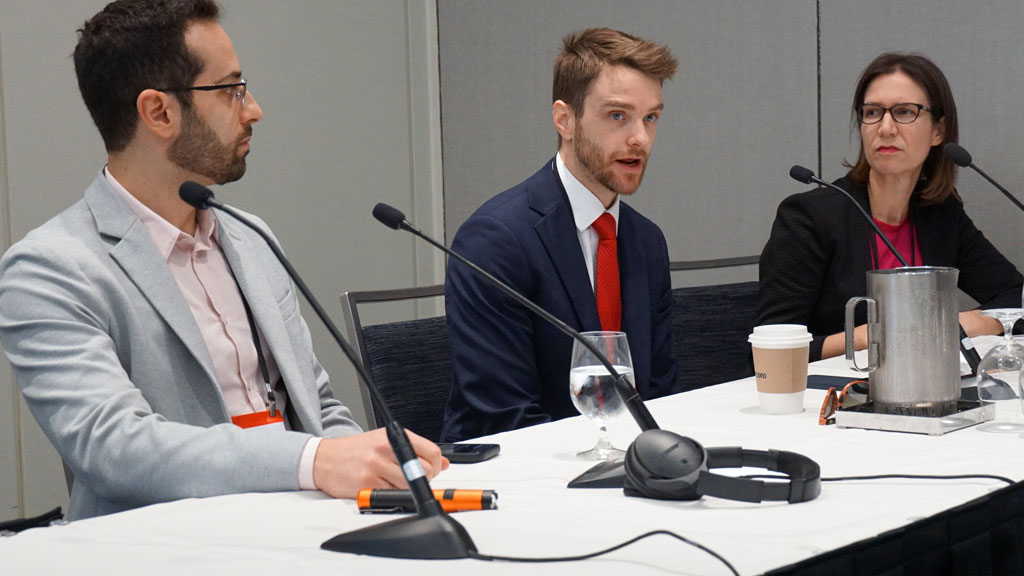When a 35-year-old Class A office building in downtown Toronto was evaluated for a conversion to all-electric to meet a zero carbon standard a few years ago, expectations were for it to break even on operating costs.
But the makeover produced results beyond expectations.
“Not only are we lowering our total kilowatt hour of consumption on electricity, we’re spending less on electricity compared to when we were only using it for pooling and plug-loading lighting use,” said Daniel Stranges, principal of engineering with Continual Energy Inc.
Continual Energy designed and developed the technology behind the decarbonization process for the building, which is part of Scotia Plaza at 100 Yonge St.
The mechanical engineer said the energy savings from the changeover in 2023 were $500,000 over 2019 when the 250,000-square-foot office building used natural gas as the heating/hot water energy source.
Even after accounting for about a 25 per cent reduction in tenant occupancy because of the pandemic, “the numbers still make such a strong business case” for electrification.
A seminar speaker on the building’s conversion recently at PM Springfest, Property Management in the City, Stranges recommended that without a carbon tax a move to electrification and decarbonization is the best avenue for buildings facing renewal of aging mechanical systems because of efficiencies gained and energy cost savings.
He said 100 Yonge St. reduced energy by 51 per cent and cut costs by 41 per cent.
To achieve these results, end-of-life boilers and chillers were removed, the HVAC system was redesigned, air handlers upgraded, controls improved and a mechanical space was moved from the second floor to the penthouse.
Kit Milnes, vice-president of sustainability and resilience at KingSett Capital, a private equity real estate business that was involved in the conversion, told the seminar audience that real-time data, down to 15-minute increments, on energy consumption is paramount to a successful decarbonization strategy.

“If you are not right-sizing it and you oversize your system it is going to cost way too much and it will never get built because no investor will green light it,” Milnes told the audience.
Continual Energy’s electrification technology was tested for a year before being implemented in the building, Milnes said, noting decarbonizing a building comes at a premium cost.
To decarbonize 100 Yonge St. cost $4.1 million, which was about $1.2 million more than a conventional retrofit.
However, Milnes said the zero carbon strategy saved more than the expected “amount of operating costs” largely because all the systems were replaced at once to operate in harmony.
He said even if the carbon tax was lifted the project would still be economical.
Stranges said the project experienced six- to eight-month delays on equipment and supplies because of the pandemic and prices were at a premium.
Pointing out access to skilled labour is the biggest barrier for complex decarb projects like 100 Yonge St., Milnes said there are only a handful of consultants (including Continual Energy) in Canada that KingSett would consider capable of doing the design/build.
Collaboration is critical to success, he said.
“You need the right team early on that is able to and wants to do something that is right-sized for the building.”
Milnes said many buildings have “oversized” heating and cooling systems.
“The easiest way to kill a decarb project is to do a like-for-like swap of mechanical system capacities.”
In June 2022, 100 Yonge St.’s boilers were disassembled and the natural gas lines capped.
While “a very key piece” was unavailable for the first winter, leaving the building operating in the “worst-case scenario,” the system still met its performance threshold, said Stranges.
He told the seminar audience electric boilers are not part of the solution to decarbonization because of inefficiencies.
Toronto buildings make up 56 per cent of the greenhouse emissions in the city, justifying decarbonization projects such as 100 Yonge St., said Caroline Karvonen, senior director of sustainability and stakeholder relations with BOMA Toronto.



Recent Comments